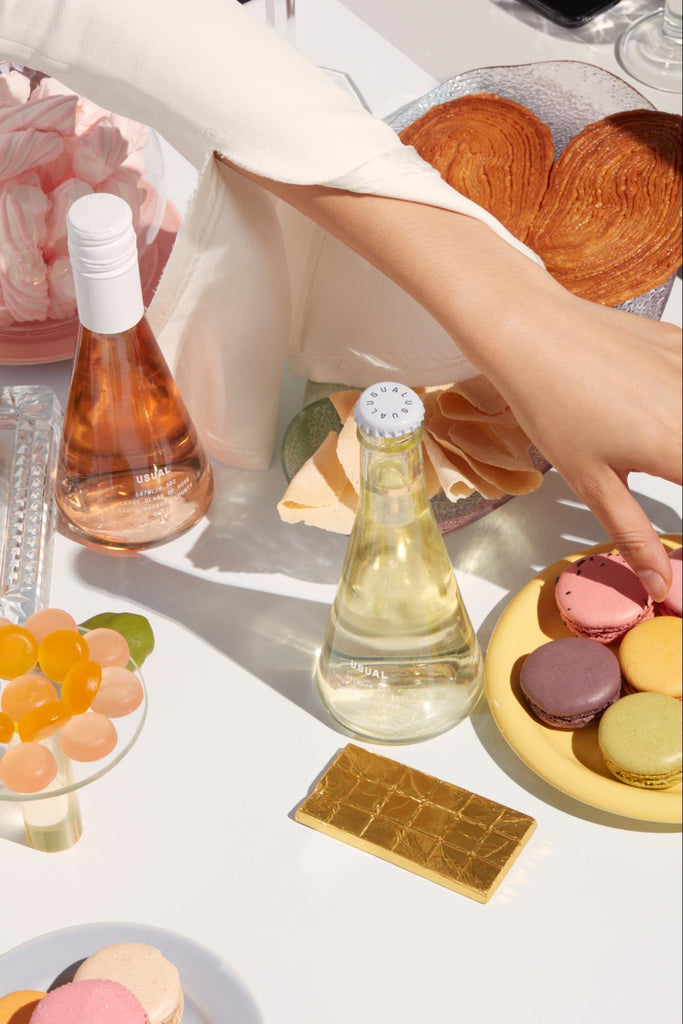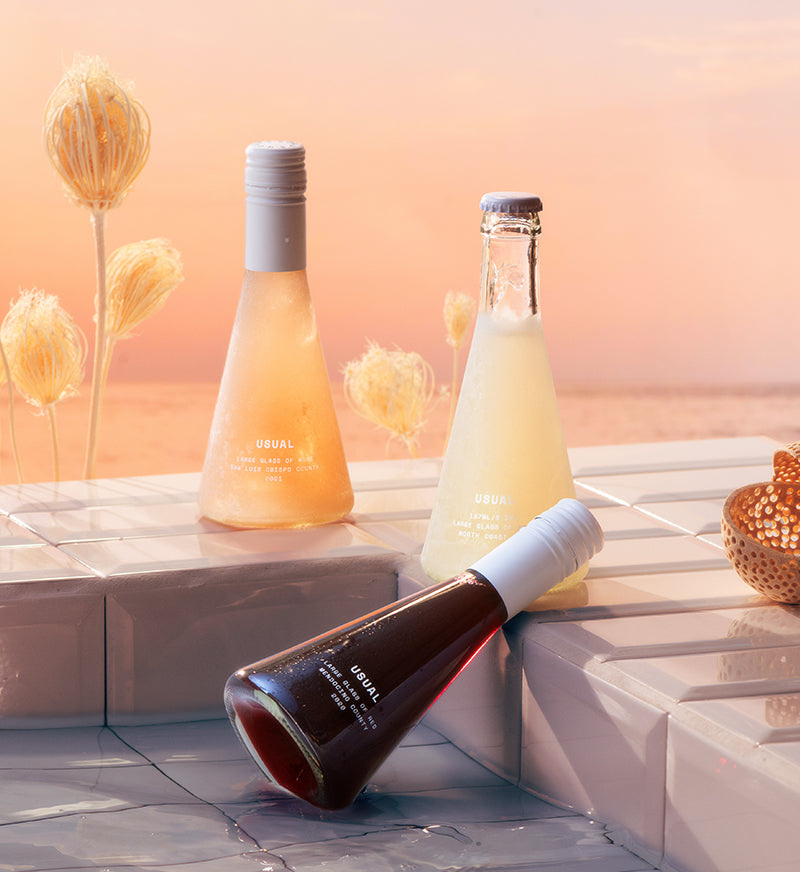Your cart looks a little empty!
Continue Shopping
Dessert Wine Guide: Dessert Wine Types & Pairings
For many people, the phrase "dessert wine" has such a sugary ring to it that leaves a rather bitter impression. After all, in today's health-conscious age of low-sugar wines, keto diets, and carb-free living, who wants a cloyingly sweet wine that can send your insulin levels soaring and leave a sticky taste on the tongue long after it's been sipped? (OK, maybe there are a few of you out there.)
While the rising popularity of dry wines (that is, wines that are not sweet) would seem to signal the death knell for sweet wines, don't write them off so fast. There is a place and time for dessert wine and it can be more versatile than you might realize. To that end, allow us to give you a little background on dessert wine and how it's different from other types of wines. We'll also provide a handy list of dessert wines along with some tantalizing food pairings.
Understanding Dessert Wine
In its broadest sense, dessert wine is any wine that is enjoyed during or after dessert. More specifically, dessert wine is usually sweet with pronounced flavor and higher alcohol content. For example, Port, Madeira, Sherry, and late-harvest wines are traditional dessert wines with more than 15% alcohol by volume (ABV). That said, there are low-alcohol dessert wines with less than 10% ABV such as Muscadet, Moscato d’Asti, and Brachetto d’Acqui.
Sweet wines have a long history, dating back to ancient civilizations. The Greeks, Romans, and Egyptians all enjoyed sweet wines, often using them for religious ceremonies and special occasions. In more recent history, dessert wines have gained popularity in regions such as Sauternes in France, Tokaj in Hungary, and the Mosel in Germany. These regions are known for producing some of the best sweet wines in the world.
When describing sweetness in wine, keep in mind that we're referring to the amount of residual sugar it has. In other words, the amount of sugar that remains after fermentation. The more residual sugar there is, the sweeter the wine; the less sugar there is, the drier the wine.
Winemakers produce dessert wines in a number of ways. It can be produced by halting the fermentation process early on so that the yeast doesn't eat all the sugar. It could be made with late-harvest grapes that have been left on the vine longer so they can raisinate and their sugar content increases.
Sometimes sweet wine is made by adding sugar during the winemaking process through chaptalization (which is regulated and even illegal in some regions). Or it might be sweetened through fortification, which creates fortified wines. These wines have been fortified with another distilled spirit, such as cognac or brandy.
While most dessert wines are on the sweeter side, there is a fair amount of variety within the category. Dessert wines can be made with red or white grapes and they come in a wide range of styles from sparkling to still, sweet to dry. Contrary to what you may have thought, dessert wines are not just sugary, one-trick-pony red wines. They deserve much more credit than that.
Choosing the Best Dessert Wine for Your Palate
As mentioned, dessert wines come in a variety of sweetness levels and range from red wines to white wines.
These tongue-pleasing sippers are ideally enjoyed with dessert or as dessert itself.
It's also worth noting that dessert wines are meant to be served in small wine glasses, much as you would when sipping on a snifter of whiskey or bourbon. (Although we must admit we're big fans of single-serve wine bottles that let you bypass the glass altogether.)
If you want sweet dessert wine, then sweet you shall have. When reading wine labels, look for the following wine terms:
- Dolce
- Dulce
- Doux
- Moelleux
Conversely, if you don't want a full-on sugar bomb on your palate, opt for vinos that have just a touch of sweetness. Look for the following descriptors:
- Amabile
- Semi-Dry
- Demi-Sec
- Semi-Secco
Discovering Various Dessert Wine Types and Food Pairings

While there are plenty of wines that you can enjoy with dessert, those that are listed here exemplify the category. When pairing wine with sweet dessert, it's best to choose a wine that's sweeter than the dish to avoid any bitter aftertaste.
As you may recall from our riveting guide about acidity in wine, sugar heightens acidity, which is why dry wines taste bitter and sharp when consumed with sweet foods. With that in mind, here are several types of dessert wines along with tasty food pairings that can amp up the flavor and enhance your experience.
Besides the more well-known dessert wines listed below, there are many other lesser-known sweet wines that are worth exploring. For instance, Vin Santo, an Italian dessert wine made from dried grapes, pairs well with almond biscotti. Another option is Banyuls, a French dessert wine from the Roussillon region, which pairs excellently with dark chocolate desserts. Exploring these lesser-known dessert wines can be a rewarding experience for wine enthusiasts.
Port
Although best known as a sweet red wine, this fortified wine from Portugal ranges in styles from rich reds to dry white and dry rosé variations. Sweetly complex red tawny port and ruby port are excellent when paired with chocolate cake, chocolate truffles, or salted caramel desserts. For the white or rosé port wines, serve alongside stone fruit, strawberry angel food cake, or lemon meringue pie.
Madeira
A fortified wine from Portugal's Madeira islands, Madeira is loved for its nutty, brown sugar, and burnt caramel notes. Enjoy darker, older, sweeter versions of this amber-hued wine on its own after a meal or sip alongside desserts such as toffee pudding, tiramisu, or spicy desserts like chocolate truffles dusted with a touch of cayenne.
Sauternes
This coveted (and oftentimes expensive) sweet wine from France's Sauternais region in Bordeaux is prized for its honeyed notes of apricot, peach, butterscotch, and caramel. Along with Tokaji Aszu wine from Hungary and Spätlese Rieslings from Germany, Sauternes is one of the "noble rot wines" made from grapes affected by the botrytis cinerea fungus. (It sounds gross, but this fungus intensifies the grapes' sweetness while adding a honeyed flavor and aromatic character.) Sauternes is equally delicious with fresh and dried fruit as well as richer desserts like crème brulee, cheesecake, and custards.
Sherry
This fortified wine hails from Spain. Although sherry is often enjoyed as an aperitif before a meal, why not give it a whirl when you're winding down after a scrumptious feast? Rich, dark, and sweet dessert sherries like Pedro Ximénez are perfect complements for crème brulee, ice cream, dark chocolate anything, or on their own.
Riesling
This fruity sparkling wine from Germany ranges from dry to sweet. Its natural acidity helps cut the sweet taste, making it a delicious accompaniment for a postprandial cheese course or cheesecake. If you have a sweeter late-harvest Riesling, pair it with citrusy desserts like lemon pound cake or lemon cream pie. Pear tarts and sorbet also make for perfectly paired palate-pleasing treats.
Gewürztraminer
Another noble rot wine, the tongue-twisting Gewürztraminer is a sweetly aromatic wine that comes from the Alsace region in France. Because of its beautiful floral and lychee notes, this delectable white wine goes great with any dessert where lychee, pear, or peach are one of the main ingredients.
Moscato
The Italian name for Muscat Blanc, Moscato is a popular white wine that has made a name for itself thanks to the three F's that best describe its character: fizzy, fruity, and floral. Perfect for sipping on a spring day or late summer evening, this dessert wine is extremely versatile. Try serving with poached pears, grilled peaches, fruit pies, nutty desserts like biscotti, or anything you like.
Ice Wine
Called Eiswein in German, ice wine is a special type of wine that comes from grapes that were frozen while on the vine. For that reason, this dessert wine can only be made in cold climates like Germany and Canada. (It's also why it's a fairly pricey wine.) Available in both red and white grape varieties, consider pairing the red version with chocolate desserts and the white variety with blue cheeses and cheesecake.
One of the best sweet wines that's gaining popularity is the Australian Rutherglen Muscat. Made from the Muscat à Petits Grains Rouge grape, these wines have a beautiful amber color and a rich, luscious flavor profile of dried fruits, candied citrus peel, and spices. Rutherglen Muscats can be served slightly chilled, pairing well with chocolate-based desserts, blue cheese, and fruit tarts.
It's Time for Dessert in a Glass
Now that you've been schooled on dessert wine, it's time to apply that knowledge to some real-world situations. Like any other category of wine, dessert wines encompass a variety of flavors and qualities. Even though there are plenty of "rules" thrown around when it comes to drinking wine, the bottom line is that you can make your own rules.
If you want to drink a bottle of dry sparkling Brut or deliciously crisp rosé with those funfetti cupcakes you just pulled out of the oven, then, by all means, give it a try. You might end up with a less-than-fun taste, but it's all about trying new things, having the experience, and finding out for yourself firsthand. Who knows? You might love it. That's the beauty of wine: However you drink it, wine is one of life's pleasures that helps everything else go down just a little bit easier.
Share

